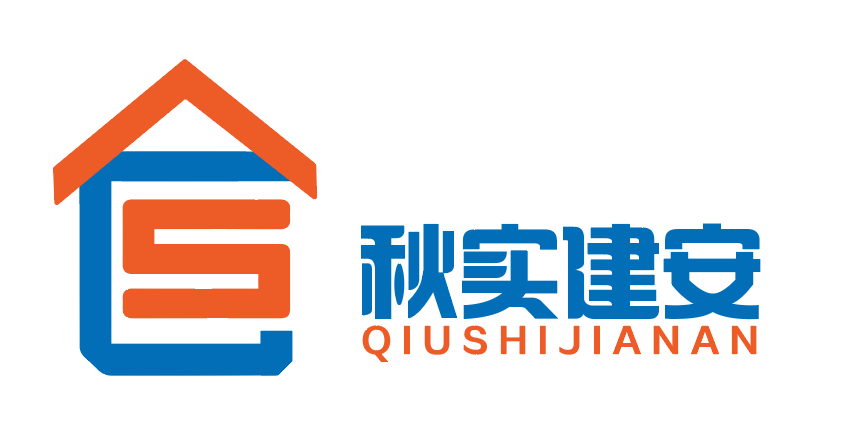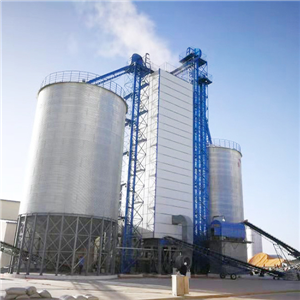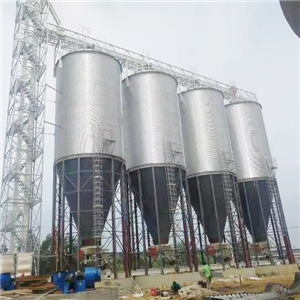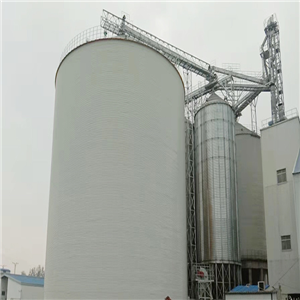How to Choose the Right Energy-Saving Strategies for Grain Silo Dryers
1. Assess Current Energy Consumption and Infrastructure
Conduct an Energy Audit: Measure power input, fuel consumption, and heat loss rates. Identify inefficiencies like excessive exhaust temperatures or frequent over-drying.
Evaluate Equipment Age and Design: Older dryers with basic combustion systems may benefit more from structural upgrades (e.g., refractory linings), while newer models might prioritize smart controls.
Climate Consideration: In cold regions, heat retention and exhaust heat recovery (e.g., using cooling exhaust to preheat incoming air) are critical. In humid areas, precise moisture control to avoid over-drying becomes paramount.
2. Prioritize Strategies Based on Cost-Benefit Analysis
Low-Cost Quick Wins
Optimize Combustion Parameters:
Adjust air-fuel ratios using manual or semi-automatic controls to ensure complete burning.
Regularly clean burners and replace worn nozzles to reduce chemical/mechanical combustion losses.
Impact: 5–10% energy savings with minimal investment.Implement Smart Scheduling:
Run drying cycles during off-peak energy hours or when ambient temperatures align with drying needs (e.g., cooler mornings for heat-sensitive grains).
Impact: Reduced electricity costs by 15–20% in regions with time-of-use pricing.
Mid-Range Investments
Install Variable-Frequency Drives (VFDs) on Fans/Pumps:
VFDs adjust motor speed based on demand, cutting energy use in ventilation systems by 20–30%.
Cost: $2,000–$5,000 per unit, payback in 2–3 years.Retrofit with Moisture Sensors:
High-accuracy sensors (e.g., capacitance or microwave types) enable real-time moisture monitoring, preventing over-drying.
Impact: Reduced energy waste by 12–18% and minimized grain weight loss.
High-Impact Upgrades
Integrate Heat Recovery Systems:
Install heat exchangers to capture exhaust heat for preheating combustion air or grain.
Example: A corn dryer in the U.S. Midwest recovered 40% of exhaust heat, cutting natural gas usage by 25%.Upgrade to Low-NOx Combustion Systems:
Modern burners with staged combustion reduce fuel waste and emissions while maintaining high thermal efficiency.
Cost: $15,000–$30,000, suitable for large-scale operations.
3. Match Strategies to Grain Type and Drying Goals
Heat-Sensitive Crops (e.g., Rice, Soybeans):
Prioritize precision control (e.g., AI-driven drying programs) to avoid quality degradation from overheating.
Use recirculated cool exhaust (10–15°C above ambient) for gentle drying stages.
High-Moisture Grains (e.g., Corn, Wheat):
Optimize combustion efficiency (e.g., refractory linings, pulverized fuel systems) to generate consistent high heat.
Employ hybrid drying (combining direct and indirect heat) to balance energy use and drying speed.
Organic/Quality-Focused Operations:
Invest in low-emission combustion (e.g., biomass burners) and closed-loop heat recirculation to meet sustainability standards.
4. Leverage Local Incentives and Technology Support
Government Subsidies: Many regions offer grants for energy-efficient equipment (e.g., tax credits for heat recovery systems in the EU).
Manufacturer Partnerships: Work with suppliers like LIAONING QIUSHI to design custom solutions, such as solar-powered monitoring systems for remote silos.
Industry Benchmarking: Compare energy metrics with peers using tools like the FAO’s Grain Storage Energy Efficiency Guide to identify gaps.
5. Monitor and Iterate for Continuous Improvement
Track Key Performance Indicators (KPIs):
Energy per ton of grain dried (kWh/ton or MJ/kg).
Exhaust temperature and moisture content post-drying.
Uptime and maintenance costs (lower maintenance often correlates with efficient operation).
Adopt Predictive Maintenance: Schedule regular tune-ups for burners, fans, and sensors to sustain efficiency gains.
Conclusion: A Tailored Approach for Sustainable Savings
Operational Scale: Small farms may prioritize low-cost adjustments, while large cooperatives benefit from high-tech retrofits.
Regional Constraints: Climate, energy prices, and regulatory requirements (e.g., emission standards) influence choices.
Long-Term Goals: Balancing short-term cost savings with long-term sustainability (e.g., biomass integration for carbon neutrality).
For personalized solutions, contact LIAONING QIUSHI at sales@qssilo.com or visit www.qssilo.comto explore tailored dryer upgrades.
Grain Dryer Grain Dryer Grain Dryer Grain Dryer Grain Dryer Grain Dryer Grain Dryer Grain Dryer Grain Dryer Grain Dryer Grain Dryer Grain Dryer Grain Dryer Grain Dryer Grain Dryer Grain Dryer Grain Dryer




